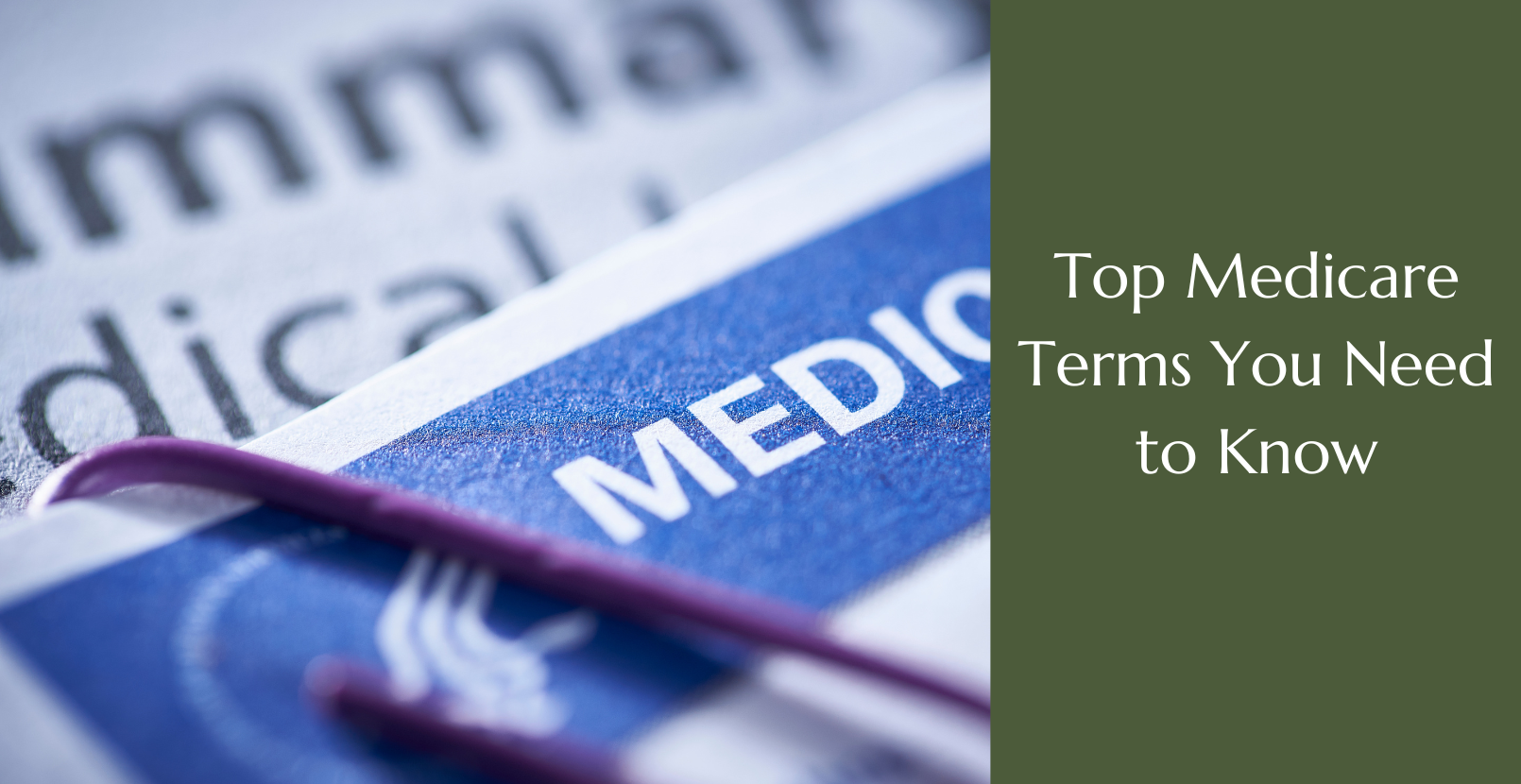Here’s a helpful alphabetized list of definitions for common Medicare terms. If you’re new to Medicare, or just here to learn, you’ll probably come across these as you search for plans and manage your Medicare benefits.
- Annual Election Period (AEP): Begins October 15 and ends December 7 each year. During AEP, you can enroll in, disenroll from or change your Medicare Advantage plan or your prescription drug plan. You can also return to Original Medicare. Elections made during AEP are effective January 1 of the following year.
- Annual Notice of Changes (ANOC): This notice is sent each September by Medicare Advantage plans to their members notifying them of any changes in their coverage, costs or service in the coming plan year.
- Coinsurance: Coinsurance is a percentage of your medical and drug costs that you may be required to pay as your share of costs for medical services or supplies (for example, 20% of the cost of a prescription drug).
- Copayment:This is a specific dollar amount that you may be required to pay as your share of the cost for medical services or supplies (for example, a $10 copay for a doctor visit).
- Coverage gap: This coverage gap begins after you and your drug plan have spent a certain amount of money on covered drugs. Not everyone will reach the gap, but while in it, members with high prescription drug costs have to pay a larger share of the cost for their medicine.
- Deductible: The deductible is the amount you pay for medical services or prescription drugs in a plan year before your plan begins to pay for benefits.
- Drug List: Also called a formulary, a Drug List details the specific drugs covered by a prescription drug plan. It’s often divided into sections, or tiers, based on the amount each plan will pay for the drugs in that group.
- Health maintenance organization (HMO): This is a type of health insurance plan where a primary care physician arranges your healthcare using providers in the plan’s network.
- Initial Coverage Election Period (ICEP): The ICEP is a 7-month period when a Medicare-eligible person can sign up for Medicare for the first time. It begins 3 months before your 65th birthday, includes your birthday month, and ends 3 months after.
- Medicaid: Jointly funded by federal and state dollars, Medicaid provides health coverage for certain low-income people, and may include pregnant women, the elderly, and those with disabilities.
- Medicare Part A: Part of Original Medicare, this helps cover inpatient hospital stays, care in a skilled nursing facility, hospice care and some home healthcare.
- Medicare Part B: Part of Original Medicare, Medicare Part B helps cover certain doctors’ and preventive services, outpatient care and medical supplies.
- Medicare Part C, also called Medicare Advantage: These plans are offered by private insurers approved by Medicare. By law, Medicare Advantage plans must offer, at minimum, the same benefits as Original Medicare Part A and Part B. Most Medicare Advantage plans also include coverage for prescription drugs, and many include some coverage for dental, vision and hearing care, as well.
- Medicare Part D: Medicare Part D is insurance for prescription drugs sold through private insurance companies. Part D can be offered in 2 ways – Part D coverage combined with a Medicare Advantage (MA) plan, or as a stand-alone prescription drug plan (PDP).
- Medicare Supplement Insurance: Also called “Medigap” insurance, Medicare Supplement insurance is sold by private insurance companies to help cover out-of-pocket costs not paid by Original Medicare, such as copays and deductibles. It does not include coverage for Part D prescription drugs.
- Network: A network is a group of healthcare providers who have agreed to provide care based on a plan’s terms and conditions. These providers include doctors, hospitals and other healthcare professionals and facilities. With most plans, you’ll save money by using an in-network provider.
- Medicare Advantage Open Enrollment Period (OEP): This option is for people enrolled in Medicare Advantage only. It runs each year from January 1 to March 31. During this time, Medicare Advantage members can switch to another Medicare Advantage plan or return to Original Medicare.
- Original Medicare: Also called Traditional Medicare, Original Medicare consists of Medicare Part A (hospital) and Part B (medical) coverage. It is offered directly by the federal government.
- Out-of-pocket costs: These are any costs you are required to pay for medical care, prescriptions and other healthcare services, including coinsurance, copayments and deductibles. Medicare Advantage plans are required to set annual maximum out-of-pocket limits, after which you pay nothing for covered care.
- Preferred provider organization (PPO): This is a type of health insurance plan that gives you the freedom to choose your own doctors and hospitals. Your out-of-pocket costs are usually lower if you choose healthcare providers that are in the plan’s network.
- Premium: The premium is the amount you are required to pay each month to Medicare or your private insurer for your healthcare coverage.
- Provider: This is anyone who provides you with medical goods or services, such as a doctor, nurse, hospital or durable medical equipment provider.
Source: Medicare.gov

